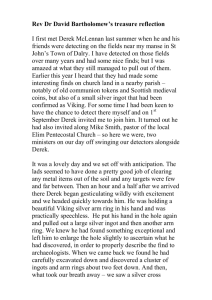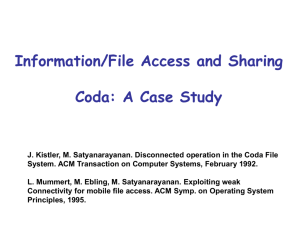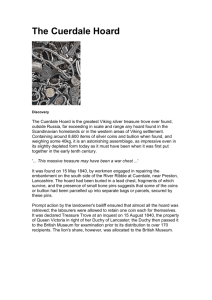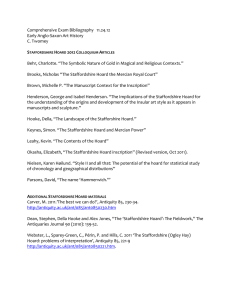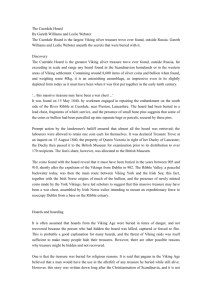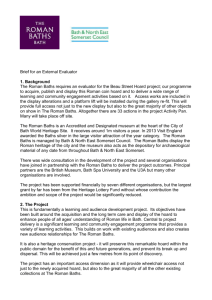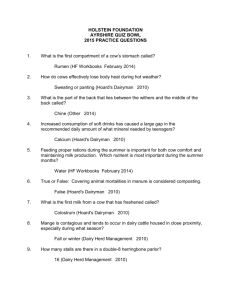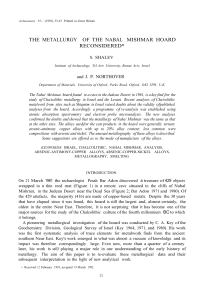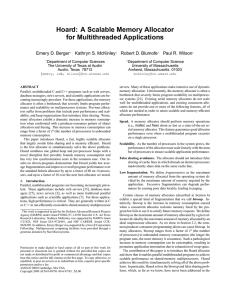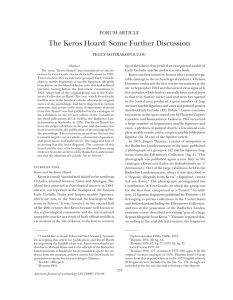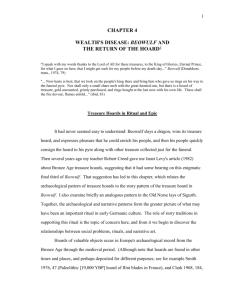Staffordshire-Hoard-Teacher-Fact
advertisement
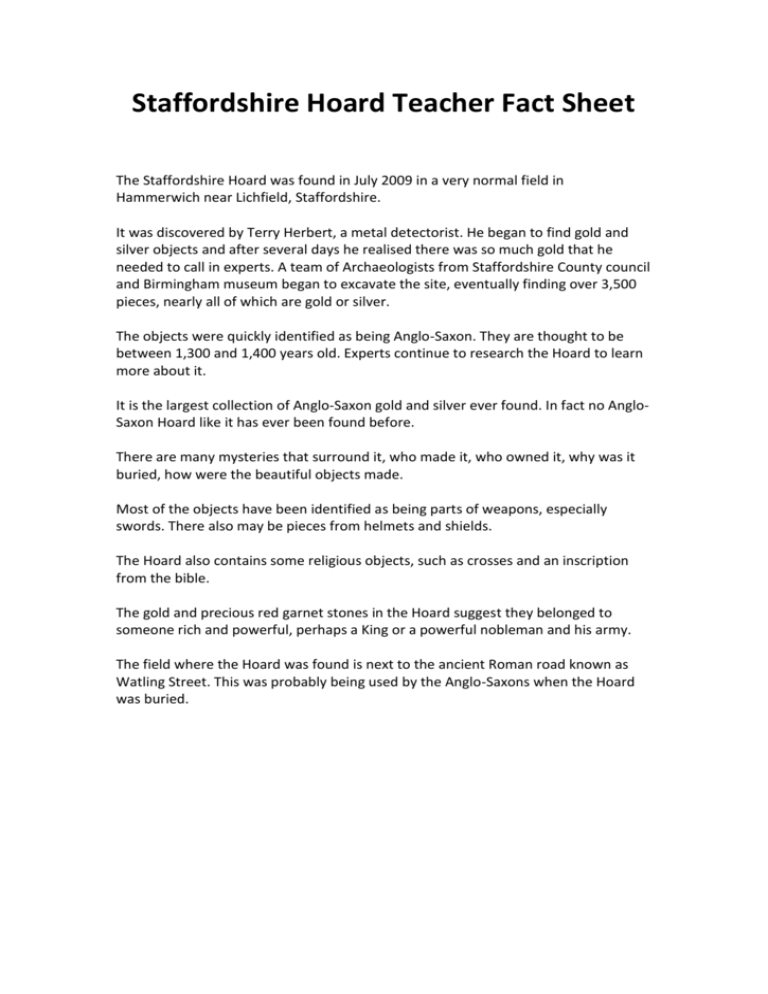
Staffordshire Hoard Teacher Fact Sheet The Staffordshire Hoard was found in July 2009 in a very normal field in Hammerwich near Lichfield, Staffordshire. It was discovered by Terry Herbert, a metal detectorist. He began to find gold and silver objects and after several days he realised there was so much gold that he needed to call in experts. A team of Archaeologists from Staffordshire County council and Birmingham museum began to excavate the site, eventually finding over 3,500 pieces, nearly all of which are gold or silver. The objects were quickly identified as being Anglo-Saxon. They are thought to be between 1,300 and 1,400 years old. Experts continue to research the Hoard to learn more about it. It is the largest collection of Anglo-Saxon gold and silver ever found. In fact no AngloSaxon Hoard like it has ever been found before. There are many mysteries that surround it, who made it, who owned it, why was it buried, how were the beautiful objects made. Most of the objects have been identified as being parts of weapons, especially swords. There also may be pieces from helmets and shields. The Hoard also contains some religious objects, such as crosses and an inscription from the bible. The gold and precious red garnet stones in the Hoard suggest they belonged to someone rich and powerful, perhaps a King or a powerful nobleman and his army. The field where the Hoard was found is next to the ancient Roman road known as Watling Street. This was probably being used by the Anglo-Saxons when the Hoard was buried.

